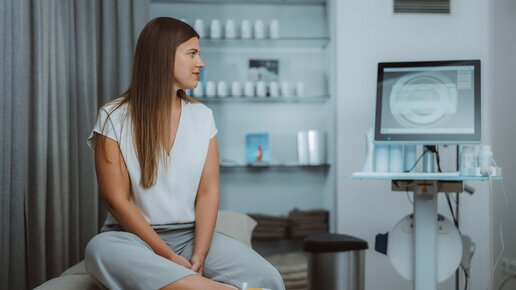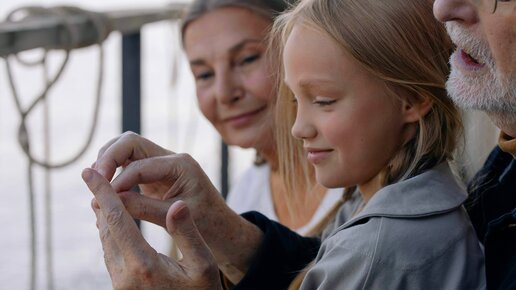Osteoporosis – a stealthy disease with serious consequences in old age. It is already one of the most common diseases in Central Europe. Around 460,000 Austrians and 5.4 million Germans are already affected by osteoporosis. However, since osteoporosis is primarily diagnosed at an advanced age, young people are often relatively casual about the disease. This is a fatal error, because from the age of 35 onwards, bone mass is already decreasing, at first very slowly, but then – especially in the absence of measures with regard to sports and nutrition – with increasing speed.
What is osteoporosis?
Osteoporosis is a bone disease in which the density, quality and firmness of the bone is reduced. A certain loss of bone density is normal and even natural from a certain age. However, in osteoporosis (= bone loss) and its precursor, osteopenia, the bone substance degrades to an increased extent. Bones lose density and stability – the risk of bone fracture increases.
Osteoporosis does not only strike in the elderly. In juvenile osteoporosis, bone density is already reduced in childhood and adolescence. Possible causes include calcium and/or vitamin D deficiency and a low-exercise lifestyle.
Osteopenia or osteoporosis? Course of osteoporosis:
Simply put, the term osteopenia describes an intermediate stage between healthy bone and osteoporosis. Even at this stage, bone density is lower compared to normal bone, but it is not yet osteoporosis. Important to know: Osteopenia does not necessarily have to end in osteoporosis.
Bone density is usually determined by special X-ray procedures on the spine and hip. If your bone density is too low for your age, you either have osteopenia or osteoporosis – depending on how severe the deviation is. Then there is a need for action.
What is meant by manifest osteoporosis?
Manifest osteoporosis is when at least one osteoporosis-related bone fracture has already occurred as a visible consequence of osteoporosis.
Osteoporosis signs & symptoms: How can bone loss be detected early?
You cannot feel osteoporosis or quickly identify it yourself based on other symptoms. However, the loss of bone mass inevitably occurs and can be detected early by special bone density measurements and intercepted to a certain degree. As is so often the case, genes also play a role. You should be particularly vigilant if your own parents are affected – that is, if they have a significantly hunched back, have shrunk quite a bit in size or have already suffered a femoral neck fracture.
Possible osteoporosis symptoms
- Bone pain
- Back pain
- Hunched back (so-called hunchback)
- Osteoporosis belly
- Loss of height
- Fractures (e.g. femoral neck, vertebral bodies)
- Delayed fracture healing
What is an osteoporosis belly or a widow's hump?
The osteoporosis belly is the visible consequence of advanced osteoporosis. The S-shaped lateral posture is particularly noticeable in slender people.
However, the osteoporosis belly is only a side effect of a hunched back. The cause of a hunched back in osteoporosis is to be found in wedge-shaped collapsed vertebral bodies, which shorten and deform the spine. In the chest area, these bend the body excessively backwards (hyperkyphosis). This leads to a shift in body focus forwards and to the formation of a hunched back, which is also known colloquially as a widow's hump. In the case of a widow’s hump, the abdomen also visibly curves outwards because the forward-curving spine pushes the soft tissue forward.
What causes can osteoporosis have?
When asked about the causes of osteoporosis, many people want a clear reason – which could be nutrient deficiency, a drug or genetic predisposition. However, several causes of osteoporosis usually play a part.
Primary and secondary osteoporosis
Physicians differentiate between primary and secondary osteoporosis. Primary osteoporosis refers to when the disease has developed without an apparent cause. In contrast, secondary osteoporosis is caused by an underlying disease, such as a hormone disorder, hyperthyroidism or chronic gastrointestinal disease.
Risk factors
Certain factors in lifestyle, but also diseases or special medications, can contribute to the development of osteoporosis.
Nutrition & lifestyle:
- Lack of movement
- Genetic predisposition
- Low-calcium diet
- Vitamin D deficiency
- Excessive alcohol consumption
- Excessive nicotine consumption
- Oestrogen deficiency (e.g. menopause, late onset of puberty, removal of the ovaries)
- Chronic underweight, eating disorders
Certain diseases, such as:
- Gastrointestinal diseases (e.g. impaired nutrient utilisation, stomach reduction, chronic inflammatory bowel diseases)
- Rheumatic diseases
- Parathyroid gland hyperfunction
- Type 1 diabetes
- Renal insufficiency
- Pancreatic weakness
- Liver cirrhosis
Certain medications, such as:
- Glucocorticoids (cortisone)
- Antidepressants
- Proton pump inhibitors (stomach protection)
- Long-term heparin therapy
- Overdosed thyroid hormones
Menopause and bone density
For women, the loss of bone density increases dramatically at around the age of 50, because the rate of bone degradation accelerates during the menopause. Why? The production of female sex hormones in the ovaries decreases and a significant impulse that inhibits bone degradation disappears with the oestrogens.
If the age-related decrease in bone density in younger years is on average 1.5% annually, this increases to up to 5% after menopause. It is a very good idea to have a bone density scan during this time. This is because, if osteoporosis or the precursor stage osteopenia is detected in a timely manner, it can still be counteracted.
Does osteoporosis only affect women or are men affected too?
Osteoporosis is far and away not purely a “female disease” and men are affected much more frequently than is widely thought. In addition to heredity, the “typically male” lifestyle is also associated with some risk factors. Osteoporosis in men can be attributed to unhealthy eating habits, excessive alcohol consumption, lack of exercise and smoking.
Prophylaxis: Osteoporosis prevention instead of therapy
Robust bones are a long-term project worth investing in – a balanced diet with a high percentage of fruits and vegetables, good year-round vitamin D supply and regular physical activity into old age form the basis for this. In addition, the following applies: Measures that help prevent osteoporosis are an important part of the therapy even in the case of pre-existing osteoporosis.
Conclusion: Osteoporosis is a silent killer, which can only be nailed down with a bone density measurement. If your bone density deviates from the norm, you should take action – better sooner rather than later – to prevent possible serious health problems in later life.

Frequently asked questions about osteoporosis
In the development of osteoporosis, age, familial tendency and an oestrogen deficiency in menopause play a role, among other things. Certain diseases (e.g., such as hyperthyroidism) or medications (especially cortisone) can also lead to so-called “secondary osteoporosis”. Other risk factors that promote early onset or severe manifestation include lack of exercise, vitamin D and/or calcium deficiency, eating disorders (anorexia) and excessive alcohol or nicotine consumption.
There are no typical first signs in the early stage of the disease. This makes the disease all the more dangerous. In the advanced stage, widow's humps, osteoporosis belly, back pain, loss of size (over 2 cm) up to bone fractures can occur without specific triggers.








